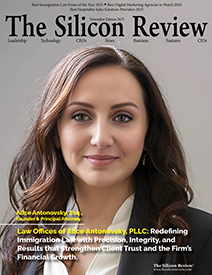50 Smartest Companies of the Year 2021
An innovator combining Speech-to-Text with Natural Language Understanding to provide everything you'll need for an awesome multimodal voice experience: Speechly
The Silicon Review
![]()
The possibilities for the future of voice technology are endless, and at the moment one thing is clear: voice search is taking off among consumers who are smitten with the latest home voice assistant devices, including Amazon’s Echo and Google Home. And just as quickly as voice is taking off among consumers, so too is it driving a need among businesses to develop a voice search strategy to incorporate into their digital marketing plans, because voice is changing the way people search for and find brands to interact with. There are many reasons why it’s becoming necessary for brands to adopt voice strategies. Voice search is a hugely popular emergent technology that will only keep getting bigger, and as it does it will change the way SEO is done, can help you improve the customer experience and drive more traffic to your site, and help you stay ahead of the competition.
Advent and Rise of Speechly
Speechly was founded in 2016 on the fundamental belief that voice will be the next big paradigm shift following touch. The company’s mission is to enable humans to interact with computers more intuitively and efficiently. At Speechly they believe that the assistant-based voice user interfaces are unsuitable for more complex user tasks because of lack of real-time visual feedback to the user. Speechly has created a patented technology, based on academic research to fix the issues of feedback. Speechly’s tech team consists of experienced machine learning researchers with academic backgrounds combined with industry experience working at the companies who have built the previous generation of voice technologies. SOK, Finland’s largest grocery store cooperative, had developed an e-commerce store for their increasingly digitally savvy customers. However allowing their customers to build their regular grocery shopping baskets from their over 90,000 SKUs proved to be relatively slow and cumbersome for their customers. To make the shopping experience easier, SOK used Speechly technology to build a voice-enabled shopping basket iOS application called “S-ostoslista” that contains over 90,000+ grocery and general merchandise SKUs. Users can use the app to create, share and buy their shopping lists using their voice. While grocery online shopping is growing fast, most people still haven’t ever purchased groceries online. Intuitive and efficient creation of grocery shopping cart enabled SOK to gain new customers.
Solving the real challenges
HUS is a hospital district for population of over 2 million and budget of over 2.5 Billion, treating over 650.000 patients every year. HUS wanted to develop a mobile application for the treatment of gestational diabetes, a condition in which a woman without diabetes develops high blood sugar levels during pregnancy. Around 10,000 women in Finland develop this condition every year of which roughly half develop type 2 diabetes later on. The total treatment costs for these type 2 diabetes cases and their complications can reach up to EUR 28 million a year. The mobile application would measure and store in the cloud the mother’s blood glucose levels, physical activity, nutrition, pulse and daily weight. This data would be forwarded in real time to health care personnel in order to provide guidance and support to the patients. One of the trickiest pieces of data to obtain was the nutrition data, which would be collected through meal diary entries reported by the patients. This had been done in previous contexts either using paper forms or by typing on a mobile application. Both methods have resulted in patients complaining about the tediousness of the task, ultimately resulting in high churn. Moreover, health care personnel were also spending significant time manually transforming meal diary entries into a digital format for analysis purposes. To solve these challenges, HUS wanted to find a partner to develop a voice-controlled mobile meal diary solution that would work across all major platforms and browsers. Speechly, together with it’s integrator partner Reaktor, developed a responsive mobile web application leveraging Speechly’s Voice Interface API to enable voice UI features. The web application allows the patients to verbally explain what they have eaten, and the system captures the information and calculates the nutritional values on the fly.
Otto Söderlund, CEO and Co-Founder
_2025-12-15_12-44-58.webp)


_2025-11-17_06-38-14.webp)

 (1)_2025-10-21_13-35-14.webp)
